Danfoss INDIV-X-10V, INDIV-X-10W Radio User guide
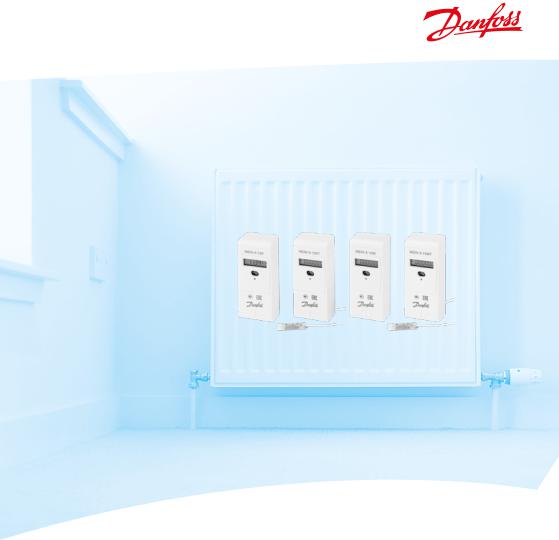
MAKING MODERN LIVING POSSIBLE
Electronic Heat Cost Allocator
INDIV-X-10V
INDIV-X-10W Radio
• User Guide
Danfoss Heating

0.0 Table of contents
0.0 Table of contents . . . . . . . . . . . . . . . . . . . . . . . . . . . . . 2
1.0Specification . . . . . . . . . . . . . . . . . . . . . . . . . . . . . . . 3
1.1 |
General Description . . . . . . . . . . . . . . . . . . . . . . . . . . . . . . . 3 |
|
1.2 |
Operating Mode . . . . . . . . . . . . . . . . . . . . . . . . . . . . . . . . |
5 |
1.3 |
Digital Display and functions . . . . . . . . . . . . . . . . . . . . . . . . . . |
6 |
1.4 |
Protection against Outside Influences . . . . . . . . . . . . . . . . . . . . . . 11 |
|
1.5 |
Operation Mode . . . . . . . . . . . . . . . . . . . . . . . . . . . . . . . . |
13 |
2.0Installation . . . . . . . . . . . . . . . . . . . . . . . . . . . . . . . . 14
2.1 Introduction . . . . . . . . . . . . . . . . . . . . . . . . . . . . . . . . . . 14 2.2 Mounting . . . . . . . . . . . . . . . . . . . . . . . . . . . . . . . . . . . 15
3.0 Commissioning and Readout . . . . . . . . . . . . . . . . . . . . . . . 24
3.1Commissioning . . . . . . . . . . . . . . . . . . . . . . . . . . . . . . . . . 24
3.2 Readout . . . . . . . . . . . . . . . . . . . . . . . . . . . . . . . . . . . . 24
4.0 Technical Data and Dimensional Drawing . . . . . . . . . . . . . . . . . 26
2 |
VUIGA102 |
Danfoss Heating |
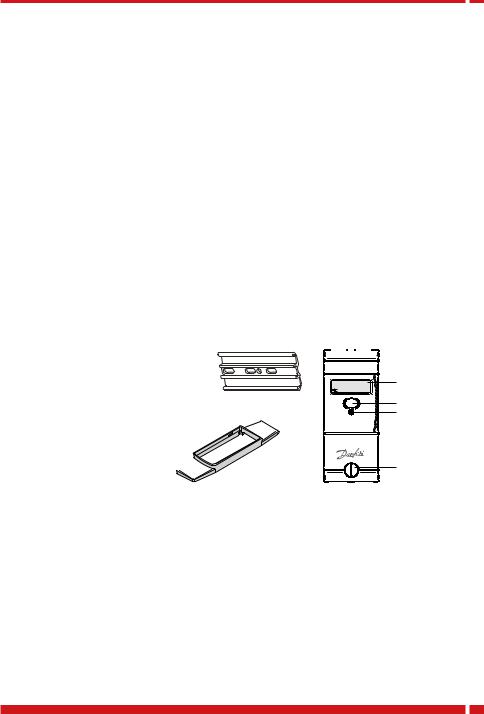
1.0 Specification
1.1 General Description
Each radiator is equipped with a heat cost allocator which records and assesses the heat output of the radiator and displays the consumption value. The consumption value is the basis for allocating the heating costs to each unit which is necessary for the billing of the heating costs.
Type
The electronic heat cost allocators INDIV-X-10V / INDIV-X-10W operate either according to the single sensor principle with start sensor or the double sensor principle. The device has been developed and approved in accordance with the European Standard EN 834:2013.
Design
The heat cost allocator consists of a microprocessor, a lithium battery, two temperature sensors, a heat conducting aluminium back plate, a multi-functional display and a plastic housing.
The measuring circuit consists of the temperature sensors, the analogue-digital conversion, the reference resistance for standardising the measuring transformation and the micro processor for accessing the radiator heat output.
During each measuring the circuit tolerances are eliminated with a reference resistance and the 

heat cost allocator carries out an automatic self-test.
Standard aluminium back plate for nearly all existing bolts with
common dimensions and mounting possibilities – thus easy installation. Snap-on blind to cover colour  shadows for increased aesthetics.
shadows for increased aesthetics. 


Versions
•Heat cost allocator INDIV-X-10V with optical interface, standard device.
•Heat cost allocator INDIV-X-10VT with optical interface, remote sensor device with 1.5 m cable.
•Radio heat cost allocator INDIV-X-10W with optical interface, standard device.
•Radio heat cost allocator INDIV-X-10WT with optical interface, remote sensor device with 1.5 m cable.
Characteristics
•Measuring by two temperature sensors, radiator and ambient temperature sensor (NTC-resistor)
•Optional measuring principle: 1 sensor mode with start sensor or two sensor mode
•Unit scale or product scale
•Recording of cumulated heat consumption on the annual set day
Danfoss Heating |
VUIGA102 |
3 |
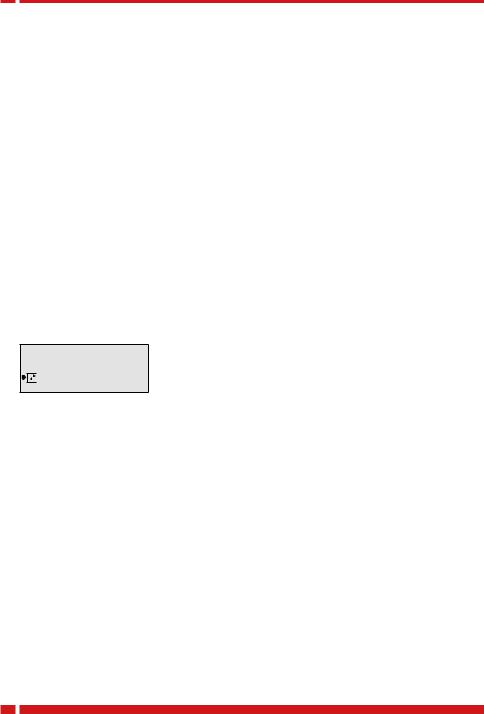
1.0 Specification
•Recording of 36 monthly values or 18 monthly and half monthly values
•Optical interface for the readout of the data and programming
•Readout via radio optional with a mobile radio modem or directly by the billing office over the radio central installed outside the unit
•User-friendly operation by push button
•6-digit and high-contrast LCD display
•Check code for postcard mail-in method
•Remote sensor version with 1.5 m cable
•Standard aluminium back plate for nearly all existing bolts with common dimensions and installation possibilities – thus easy installation (no cutting and welding of bolts necessary)
•Snap-on blind to cover colour shadows for increased aesthetics
•Safe operation and fraud detection
•Factory seal protecting against unauthorized manipulation
•Possibility to use seal sticker as second seal for further protecting against manipulation
•Lithium battery with a capacity of up to 10+1 years
•Meets EN 834:2013
Display
The heat cost allocator has a LCD-display with 6 large main digits on the right and 2 smaller digits on the left as well as two special symbols and one communication indicator. The main digits are separated by four decimal points. Below, please find the display segments:
 : : Display with all active segments
: : Display with all active segments
Normally, the heat cost allocators INDIV-X-10V / INDIV-X-10W are supplied with switched-off LCD-display. On request, the heat cost allocators can also be supplied with permanent LCDdisplay.
Optical Interface
With a standardised optical probe the consumption and configuration values can be transferred directly to a computer. With the radio heat cost allocator INDIV-X-10W all consumption values can thus be readout over the optical interface and over radio. The data are transmitted in M-bus-format acc. to EN1434. Authorised personnel can alter the configuration of the device over the optical interface with an optical probe.
Radio Transmission
The radio heat cost allocator INDIV-X-10W features a transceiver circuit in the 433 MHz band with integrated antenna. With the radio system, proven since more than 10 years; it is possible to readout the consumption values via a mobile radio modem or via a radio central installed directly in the office. The radio system is a bidirectional system, i.e. the radio heat cost allocator is only called from a mobile PDA or a radio central upon request to send its data. It is a great advantage that this system allows the alteration of the parameters over radio.
4 |
VUIGA102 |
Danfoss Heating |
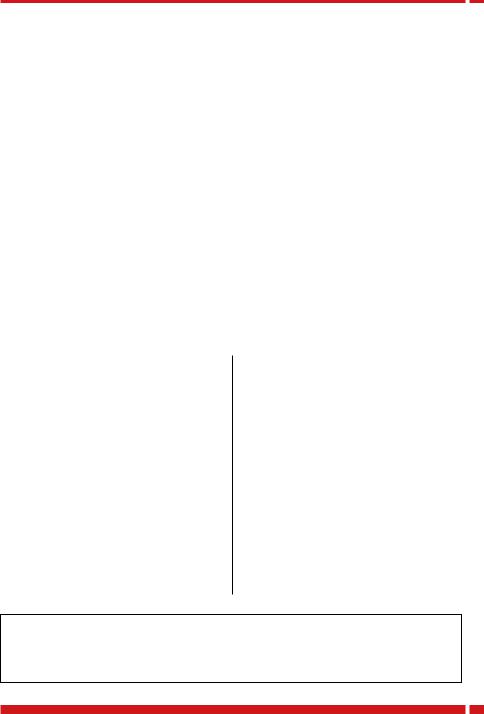
1.0 Specification
1.2 Operating mode
Cycle Time
Every 4 minutes the device is set into operation and operates according to the adjoining diagram.
The tasks carried out during one cycle are taking approx. 200 ms. This means that the device is in sleeping mode more than 99.8 % of the time. It can be set into operation between
two cycles over the optical probe or by pushing the button. In this case it carries out the requested task and then returns to sleeping mode.
In case an optical probe is connected or the button is pushed during the course of the cycle, the respective value is readout at the end of the cycle.
The button should not be pushed indefinitely to avoid a mechanical damage. The optical probe can be left in its position since the normal function of the device is not impaired by an influence from outside.
Heat Accumulation Mode
In order to avoid faulty measuring due to heat accumulation (e.g. in case the radiator is hidden by panels), the device switches from a defined ambient temperature (e.g. 28°C) to the one sensor mode and calculates with an ambient temperature of 20° C.
Comparison of the Measuring Principles
Single sensor device with start sensor measuring principle
For heating systems with tmmin ≥ 55 °C
The heat cost allocator calculates with a set reference temperature of 20 °C Application:
Single sensor devices with start sensor are used in areas where normal ambient
temperatures are given. For low temperature heating systems the double sensor device is recommended.
For radiators which are covered or blocked by fixtures, normally the single sensor devices are used because the double sensor device is not in a position to capture the current ambient temperature due to the heat accumulation.
Double sensor measuring principle
For heating systems with tmmin ≥ 35 °C The heat cost allocator calculates with a
variable reference temperature Tair temperature Application:
Double sensor devices are used in areas where precise measuring of the ambient temperature is necessary and/or in low temperature heating systems.
Radiators which are covered or blocked by fixtures are detected automatically by the double sensor system which then switches over internally to the single sensor mode.
Within one billing unit, only one measuring principle (either single sensor measuring principle with start sensor or double sensor measuring principle) can be used. Mixed fitments or the use of different types of devices in the same billing unit is therefore not allowed .
Danfoss Heating |
VUIGA102 |
5 |
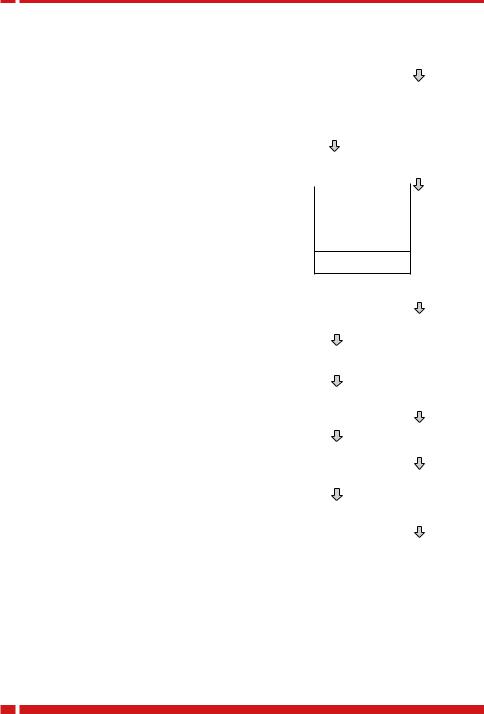
1.0 Specification
1.3 Digital Display and functions
The menu sequences
Ex factory all menu sequences are activated. With the software INDIV-X-VISUAL-CONF the order of the menu sequences 1 - 7 can be changed in any order. However the order within the individual menu sequences 1 - 7 cannot be changed. It is also possible to hide individual menu sequences so that they are not visible to the end-user. When reading out over the optical interface or via
radio the complete set of data is always readout and transferred.
Operation of the Push Button
When pushing the button briefly the digital display always goes to the next menu sequence.
When pushing the button in one menu sequence for 2 seconds the individual values within the selected menu sequence can be accessed. When the last value
within one menu sequence has been displayed, the next menu sequence can be reached by pushing the button again.
If the button is not pushed for 2 minutes, the digital display returns to the cumulated consumption value.
The Digital Displays
During normal operation the display is deactivated and can be activated by pushing the button. On request, the heat cost allocator is also available with permanent
display from 06:00 - 20:00 h or 24 hours a day. The consumption value is displayed. By pushing the button and depending on the configuration of the heat cost allocator more than 50 different values can be displayed. If the button is not pushed, the display will be active for 2 minutes only. Exception: permanent display mode. The current and monthly values recorded by the heat cost allocator INDIV-X-10V and INDIV-X-10W as well as several other parameters can be readout over the optical interface or also over radio with the heat cost allocator INDIV-X-10W (see description below).
|
Comsumption value |
|
Display position 1 |
|
|
|
|
|
|
|
Long key press |
|
Set day value |
|
|
|
|
||
|
|
|
|
|
Check code |
|
|
|
|
|
|
|
Value on December 31st |
|
|
|
or before the reset to 0 |
|
|
|
Short key press |
|
|
|
|
|
Display position 2 |
|
Current time |
|
|
|
|
|
|
|
|
|
Long key press |
|
Current date |
|
|
|
Set day date |
|
|
|
|
|
|
|
Date of opening of the |
|
|
|
device |
|
|
|
Commissionen date |
|
|
Cumulated duration of the opening of the device
 Short key press
Short key press
|
Set day value |
|
Display position 3 |
|
|
Long key press |
|
|
|
|
|
|
Check code |
|
|
|
|
|
|
|
Short key press |
|
|
|
|
|
Display position 4 |
|
Check code |
|
|
|
|
|
|
|
|
|
|
|
Short key press |
|
|
|
|
|
Display position 5 |
|
Monthly values |
|
|
|
|
|
|
|
|
|
Long key press |
|
|
|
|
|
Short key press |
|
|
|
Radiator temperature |
|
Display position 6 |
|
|
Long key press |
|
|
|
|
|
|
Ambiant temperature |
|
|
|
|
|
|
|
Short key press |
|
|
|
|
|
Display position 7 |
|
Segment test |
|
|
|
|
|
|
|
|
|
Long key press |
|
Identi cation number |
|
|
|
|
||
|
|
|
|
|
Measuring principle + |
|
|
|
software version |
|
|
|
|
|
|
Energy-Saving Night Mode between 20.00 and 6.00 h
If the LCD-display is activated, the heat cost allocator switches automatically to the energy-saving night mode between 20.00 and 06.00 h (winter time). During this period the LCD-display is deactivated and switched off generally.
6 |
VUIGA102 |
Danfoss Heating |
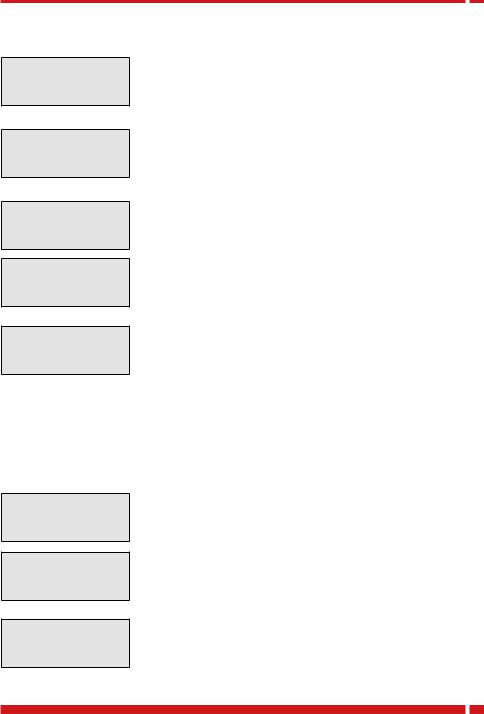
1.0 Specification
Consumption Value Unit Scale
On the display of the heat cost allocator with unit scalean index u for unit is shown on the left side. If the index
u is not displayed, the heat cost allocator is equipped with the product scale.
Consumption Value Product Scale
When commissioning the device this value is 000000.When reaching the value 999999, the counting restarts
automatically at 000000.
Set Day Value
Check Code
With the index ud the consumption value recorded at midnight of the set day is displayed.
If a new device has not yet reached the programmed set day, 000000 is displayed.
With the index cc the check code for the plausibility check of the manual readout is displayed.
With especially developed algorithms a 6 digit check code is generated out of several device data. With this check code the values stated on the postcards mailed-in by tenants can be cross checked.
For the verification of the check code Danfoss places all necessary tools (programmes, formulas) at the disposal of the authorised personnel.
Consumption Value of the
Previous Heating Period


Time
:
With the index uI the consumption value is displayed which was recorded on December 31st or before the reset to zero.
000000 is displayed on a new device as long as a reset has not been carried out.
The current time (always winter time)
Danfoss Heating |
VUIGA102 |
7 |
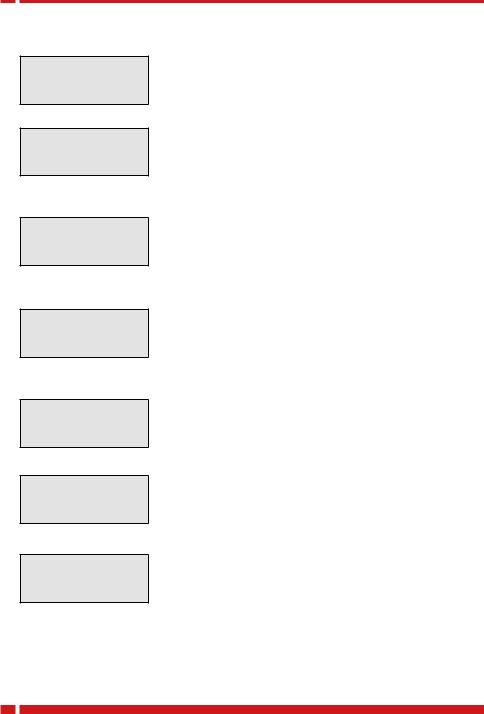
1.0 Specification
Date
. .
Set Day
. .
Date of Opening of the Device
. .
Commissioning Date
. .
Cumulated Duration of the
Opening of the Device
Identification Number

Monthly Values
The current date of the heat cost allocator
It is possible to program an annual set day on which the cumulated consumption value as well as the maximal radiator temperature are recorded.
With the index Sd the programmed annual set day is displayed.
Each heat cost allocator is equipped with a manipulation protection which detects an unauthorised opening of the device after installation to the radiator. The date of the opening of the device is recorded and displayed with the index od.
With the index cd the commissioning date is displayed, i.e. the date on which the device has been activated by pushing the button or the date of commissioning programmed ex factory.
The cumulated duration in minutes during which the device was opened is detected. This display turns up only after commissioning in case the heat cost allocator was opened or removed.
With the index an 8 digit identification number is displayed. Ex factory the serial number is identical with the identification number. The first two digits of the identification number are the two small digits on the left upper side of the digital display.
an 8 digit identification number is displayed. Ex factory the serial number is identical with the identification number. The first two digits of the identification number are the two small digits on the left upper side of the digital display.
The cumulated consumption values are recorded automatically at midnight on the last day of each month.
Number of monthly values: 18 or 36
8 |
VUIGA102 |
Danfoss Heating |

1.0 Specification
Values
Half Monthly Values
Radiator Temperature
The small digits on the upper left side show the number of previous monthly values. Digit 01 stands for the recent full month and digit 18 or 36 stands for the least recent month. All monthly values are set to 000000 when the device is commissioned.
Note INDIV-X-10W radio:
The radio heat cost allocator INDIV-X-10W only transmits the first 16 monthly values via radio telegram.
The cumulated consumption values are recorded automatically at midnight on the 16th of each month.
The small digits on the upper left side indicate the number of half monthly values. Digit 41 stands for the recent half monthly value and digit 58 for the least recent half monthly value. All half monthly values are set to 000000 when the device is commissioned.
If the heat cost allocator INDIV-X-10V is programmed with 36 monthly values the menu sequences for the half monthly values are omitted.
Note INDIV-X-10W radio:
The heat cost allocator INDIV-X-10W does not transmit the half monthly values via radio telegram.
|
. |
With the index tH the current radiator temperature is |
|
displayed. |
|||
|
|||
|
|
||
Ambient Temperature |
|
||
|
|
With the index tA the current ambient temperature is |
|
|
. |
||
displayed. |
|||
|
|||
|
|
|
|
Maximum Radiator Temperature
of the Current Heating Period
.
With the index P0 the maximum radiator temperature since the last reset or of the current heating period is displayed.
Danfoss Heating |
VUIGA102 |
9 |
